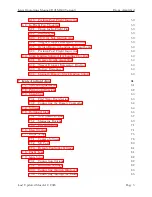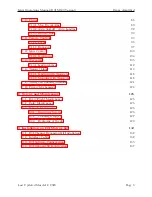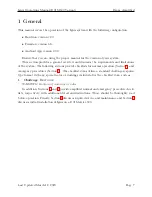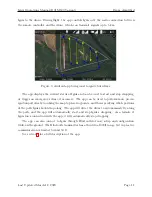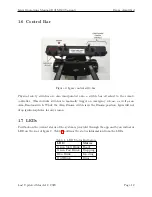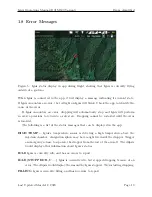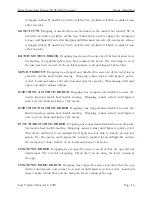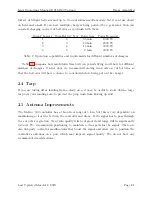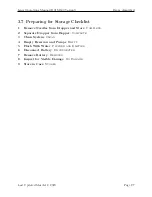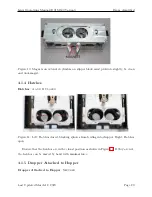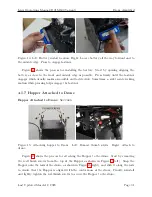
Ignis Operations Manual (DJI M600 Variant)
Drone Amplified
If these troubleshooting steps do not resolve the issue, contact Drone Amplified for sup-
port.
1.9 Environmental Limitations
The Ignis system has been designed to operate under the following conditions:
•
System temperatures ranging from 5
o
C to 40
o
C (40
o
F to 105
o
F).
•
No precipitation.
•
Humidity under 90% and non-condensing on the surface of Ignis.
•
Winds within the operational limits of the drone carrying Ignis, but no greater than
15m/s.
Caution should be exercised when performing ignitions under high winds and/or at higher
altitudes to ensure that the ignition spheres drop on target and are not blown out of the
ignition area.
Operations outside of these limits are untested, add risk, and may endanger property
and persons. Special care must be taken to ensure that temperatures are not inadvertently
exceeded. For instance, leaving Ignis in its storage case in the sun can cause temperatures to
be exceeded, even when the ambient temperature is significantly lower. Similarly, moisture
and temperatures can vary significantly based on drone altitude.
1.10 Ignition Spheres and Fluid
The Ignis system is designed to use standard Dragon Egg spheres
com/products/fire-ignition-spheres/
. The Ignis 2 Hopper holds up to 400 ignition
spheres. Use with other ignition spheres is not supported and may cause damage to the
equipment, drone, or uncontrolled fires.
The Ignis injects ethylene glycol (common automotive antifreeze) into the ignition spheres.
After injection, the ignition spheres typically will ignite within 20-40 seconds, although this
time is highly variable based on the ambient temperature (longer times at colder tempera-
tures, sometimes as long as 2 minutes when near freezing).
The amount of antifreeze Ignis injects is fully customizable and can be configured in
the app (see Section 4.1.17). Injection amounts between 0.3-0.5ml works well under most
conditions, although variability in antifreeze composition can impact the results and require
adjustment of this parameter. We recommend testing under controlled conditions to ensure
Last Updated March 12, 2020
Page 17



